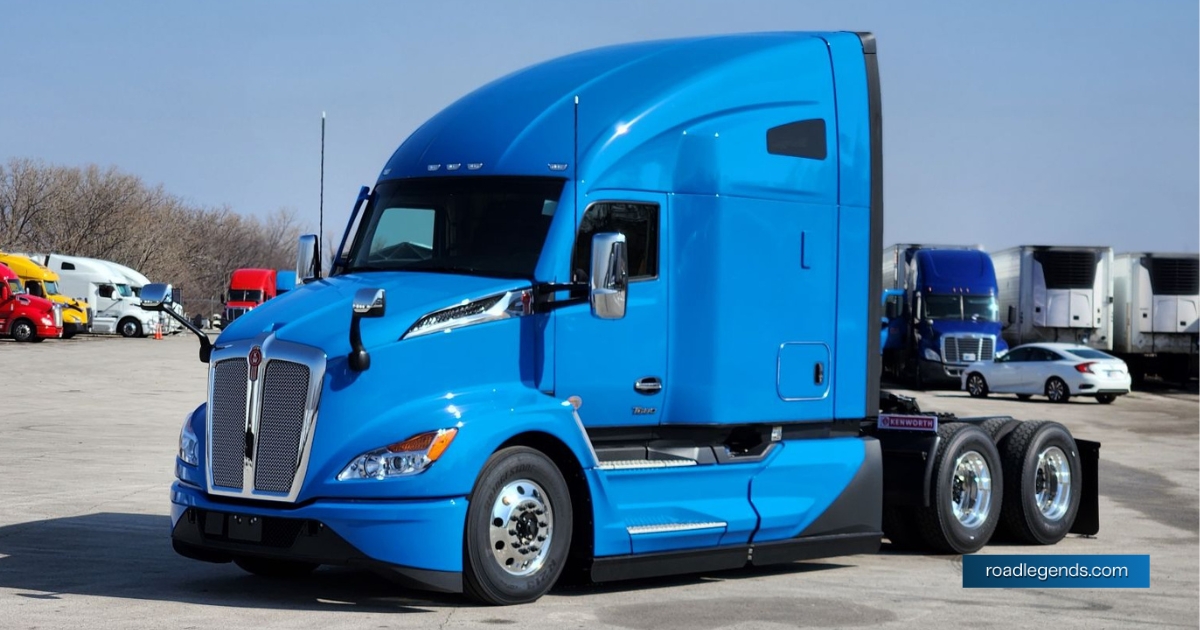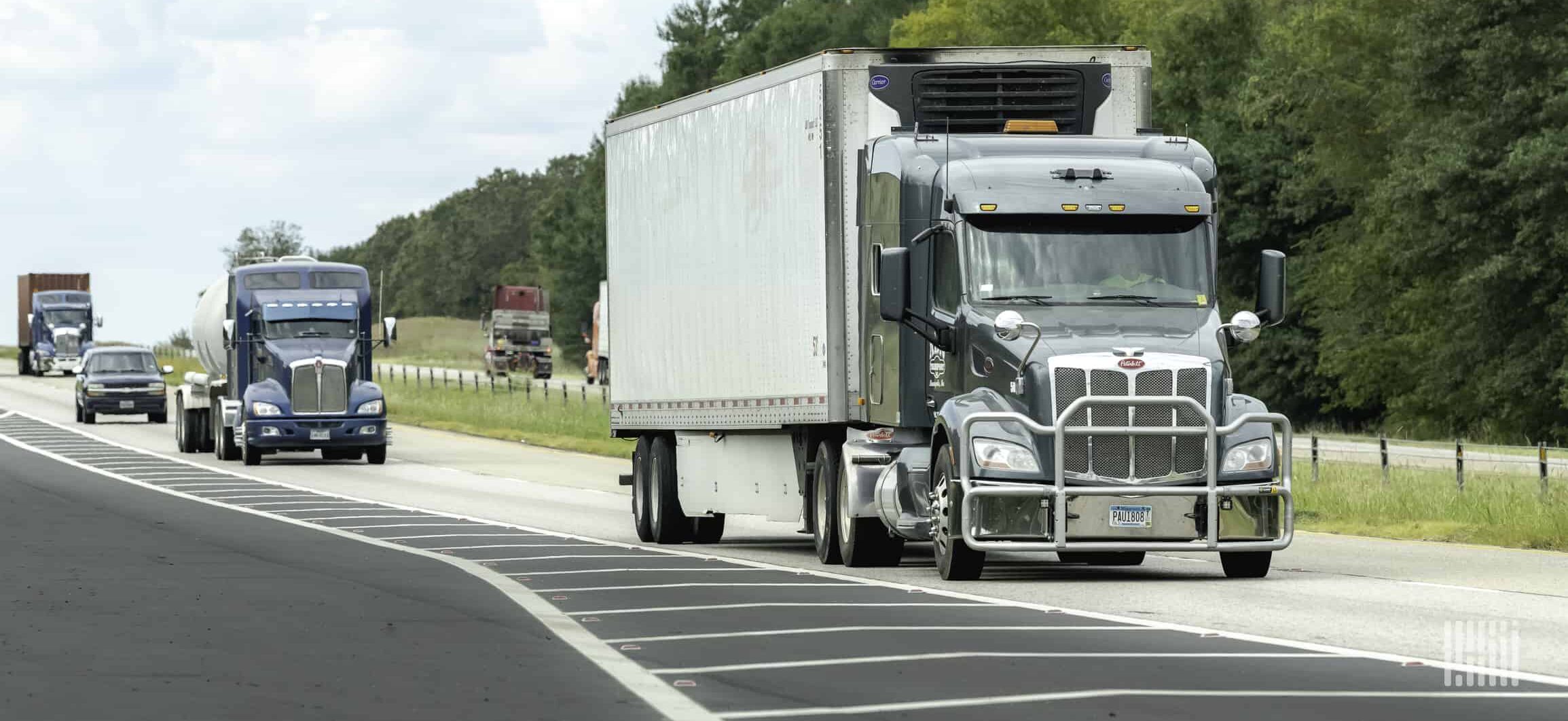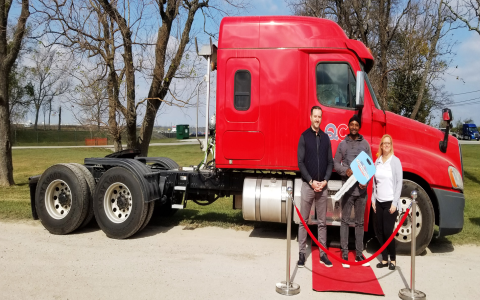Lease Purchase Trucking Companies That Pay a Percentage: Your Path to Ownership?
For many truck drivers, the dream of owning their own rig and being their own boss is a powerful motivator. But the steep upfront cost of a new truck can feel like an insurmountable wall. This is where lease purchase trucking companies that pay a percentage come into the picture. Unlike traditional lease-purchases with fixed weekly payments, these programs offer a revenue-sharing model. You get a percentage of the load revenue, and a portion of that pay is automatically deducted to cover the truck lease. It sounds like a fairer, more transparent system. But is it the right move for you? As someone who’s spent a decade in the trucking industry, I’ve seen drivers thrive and others struggle with these deals. Let’s peel back the layers and see if this path to ownership is a golden ticket or a detour.
How Percentage-Based Lease Purchase Programs Actually Work
At its core, a percentage-based lease purchase flips the script on the traditional model. Instead of worrying about a flat weekly truck payment whether you’re busy or slow, your costs are directly tied to your earnings.

Here’s the typical breakdown:
- You Get a Percentage of the Gross: The company pays you a set percentage of the total revenue for every load you haul. This rate often falls between 70% and 85%, but it’s crucial to read the fine print.
- Automatic Deductions: From your share of the revenue, the company deducts the truck lease payment, insurance, and other fixed fees. What’s left is your take-home pay.
- The Ownership Goal: After a set period (usually 3-5 years) and once you’ve made all the agreed-upon payments, the title of the truck is transferred to you.
The main appeal is alignment. When freight is booming and you’re running hard, you earn more, and the company earns more. Your success is their success, which should, in theory, incentivize them to keep you moving. However, this model also means your income is directly exposed to the volatility of the freight market.
Comparing the Models: Percentage Pay vs. Fixed Payment
To truly understand the difference, let’s put the two common models side-by-side. This comparison is based on industry-standard figures from a American Trucking Associations report on carrier operational costs.
| Feature | Percentage-Based Lease | Fixed Payment Lease |
|---|---|---|
| Payment Structure | Percentage of load revenue (e.g., 78%) | Fixed weekly amount (e.g., $800) |
| Income in a Strong Market | Potentially very high | Stable and predictable |
| Income in a Slow Market | Can be very low or unpredictable | Still stable, but payment is due regardless |
| Risk Factor | Higher income risk, shared market risk | Higher fixed-cost risk |
| Best For | Drivers confident in consistent high freight volumes | Drivers who prioritize budget predictability |
The Real Pros and Cons: An Insider’s View
After talking to countless drivers and company reps, the advantages and disadvantages of these percentage pay lease purchase programs become clear.
The Upsides
- Higher Earning Potential: In a robust freight environment, your earnings can significantly outpace what you’d make on a fixed payment plan or even as a company driver.
- Cost Transparency: You see exactly what the load pays and what’s being taken out. This can feel more equitable than a fixed payment that feels disconnected from your work.
- Path to Ownership: It remains one of the most accessible ways to eventually own a truck without a massive down payment.
The Downsides
- Market Volatility: This is the biggest risk. According to data from DAT Freight & Analytics, spot rates can fluctuate over 30% in a single year. A market downturn directly slashes your income.
- Hidden Costs: The lease payment might be a percentage, but what about maintenance, tires, and permits? Some companies cover these, others deduct them. You must know exactly what you’re responsible for.
- The “Never-Ending Lease” Trap: If the truck requires major, unexpected repairs, the costs can be deducted from your pay, potentially extending your lease term indefinitely and pushing ownership further away.
Red Flags and Green Lights: Choosing the Right Partner
Not all lease purchase trucking companies are created equal. Your success hinges on partnering with a reputable firm. Here’s what to look for.
- Green Light: Transparent Contract. The agreement should clearly state the revenue percentage, all possible deductions, the buyout amount, and the process for transferring the title. Get everything in writing.
- Red Flag: High-Pressure Sales Tactics. If a recruiter is rushing you to sign without giving you time to review the contract or talk to current drivers, walk away.
- Green Light: Proven Driver Success. A good company will happily connect you with several current and former drivers in their program. Talk to them. Ask about their home time, repair experiences, and if they felt the company supported them.
- Red Flag: Vague Answers on Freight. Ask, “How will you keep me loaded?” A good answer includes details on their freight network, dedicated lanes, and dispatcher support. A vague answer is a major warning sign.
Essential Questions to Ask Before You Sign
Walk into any meeting with a recruiter armed with this list. The answers will tell you everything you need to know.
- What is the exact revenue percentage I will receive?
- Please list every single item that will be deducted from my settlement.
- Who is responsible for routine maintenance, tires, and unexpected major repairs? What is the cap on my responsibility?
- What is the total cost of the truck at the end of the lease, and is there a balloon payment?
- Can I see a sample settlement sheet from a current driver?
- What is your company’s driver turnover rate for this specific program?
Frequently Asked Questions
Q: Can I really make more money with a percentage pay lease?
Q: What happens if the truck breaks down?
A: This is critical. You must understand the repair policy. Does the company have a shop? Do they have a network of approved mechanics? Who pays for the tow and the repairs? A bad repair policy is the fastest way to financial ruin in a lease purchase.
Q: Is this a good option for a new CDL driver?
A: Generally, no. New drivers are still learning the industry and may not have the business savvy or emergency savings to handle the income swings and potential costs. It’s often wiser to gain 1-2 years of experience as a company driver first.
The Bottom Line
Lease purchase trucking companies that pay a percentage offer a unique, performance-based path to truck ownership. The model can be highly rewarding for the right person—a disciplined, business-minded driver with a strong safety net and a clear understanding of the risks. However, it’s far from a get-rich-quick scheme. It demands due diligence, a rock-solid contract, and a partnership with a carrier that has a proven track record. Do your homework, ask the tough questions, and you’ll be in a much better position to decide if this is the steering wheel you want to grab hold of for your future.
Sources and Further Reading
- American Trucking Associations – Industry data and reports.
- DAT Freight & Analytics – Freight market trends and rate data.
- Federal Motor Carrier Safety Administration (FMCSA) – Regulatory information and carrier safety records.








